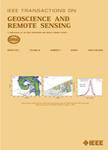版权所有:内蒙古大学图书馆 技术提供:维普资讯• 智图
内蒙古自治区呼和浩特市赛罕区大学西街235号 邮编: 010021

作者机构:Univ Maryland Baltimore Cty Dept Comp Sci & Elect Engn Baltimore MD 21250 USA Univ Maryland Baltimore Cty Dept Phys Baltimore MD 21250 USA
出 版 物:《IEEE TRANSACTIONS ON GEOSCIENCE AND REMOTE SENSING》 (IEEE Trans Geosci Remote Sens)
年 卷 期:2025年第63卷
核心收录:
学科分类:0808[工学-电气工程] 1002[医学-临床医学] 08[工学] 0708[理学-地球物理学] 0816[工学-测绘科学与技术]
基 金:NOAA Center for Atmospheric Science-Meteorology (NCASM II) through the U.S. Department of Commerce National Oceanic and Atmospheric Administration Educational Partnership Program [NA22SEC4810015]
主 题:Instruments Atmospheric measurements Signal processing algorithms Meteorology Laser radar Extraterrestrial measurements Reflectivity Measurement by laser beam Pollution measurement Estimation Atmospheric radiation measurement (ARM) value-added product (VAP) Bragg scattering Canny edge detection ceilometer convective boundary layer (CBL) height (CBLH) estimation differential reflectivity filtering LiDAR mixing layer height (MLH) multi-instrument CBL nationwide coverage Next-Generation Radars (NEXRAD) planetary boundary layer (PBL) PBL height (PBLH) quasi vertical profiles (QVPs) radiosondes Raman LiDAR signal-to-noise ratio (SNR) Signal Processing of Images for Convective Boundary Layer Height Estimation From Radar (SPICER) wind profiler Weather Surveillance Radar (WSR-88D)
摘 要:The study of the planetary boundary layer (PBL) is one of the main topics of the atmospheric community. This study presents a new algorithm for PBL height determination using a publicly available but unexplored data source, the Weather Surveillance Radar (WSR-88D). The diurnal evolution of the PBL is also known as the convective boundary layer (CBL), key in the study of convection and precipitation. This article presents the Signal Processing of Images for Convective Boundary Layer Height Estimation From Radar (SPICER) algorithm that can automatically detect the CBL height (CBLH) for all 159 radar locations across the United States during clear days. This work is the first step to applying SPICER to a network of Next-Generation Radars (NEXRAD) with continuous countrywide coverage. With the possible combination with the Automated Surface Observing System (ASOS) network, a source of ceilometer profile data, a validated dataset of CBLH estimates can be expected soon. The algorithm treats averaged differential reflectivity versus range as an image and applies filtering plus Canny edge detection to estimate the CBLH. In addition, another algorithm is presented to automate the detection of the mixing layer height (MLH), a proxy for CBLH from Raman LiDAR, and a 915-MHz wind profiler. A comparison of CBLH estimates versus widely used methods in meteorology [radiosondes, Raman LiDAR, ceilometer, 915-MHz wind profiler, and Doppler LiDAR-based derived value-added product (VAP)] is performed to validate the NEXRAD-detected CBLH using SPICER. The SPICER algorithm shows over 0.9 correlation with radiosonde measurements.